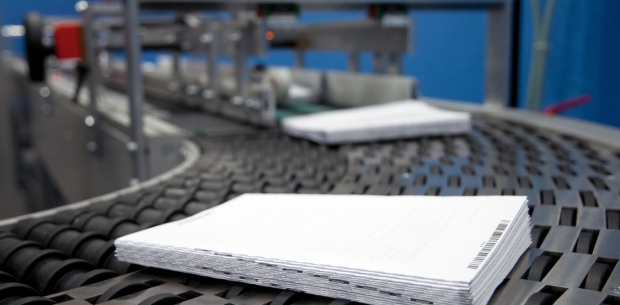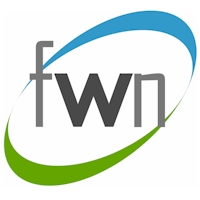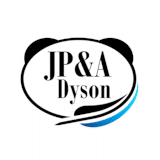
Writing Issues: Advice I Give: Patrick O’Neil
huffingtonpost.com – Friday February 24, 2017

Patrick O’Neil is the author of the memoir Gun, Needle, Spoon (Dzanc Books). His writing has appeared in numerous publications, including Juxtapoz, Salon, The Nervous Breakdown, After Party Magazine, and Razorcake. O’Neil is a contributing editor for Sensitive Skin Magazine, a Pushcart nominee, a two time nominee for Best Of The Net, and a PEN Center USA Professional and former Mentor. In today’s “Writing Issues,” I asked him what advice he would give aspiring authors.

Transparency, targeting, Twitter: what it means to be a literary agent now
thebookseller.com – Monday February 20, 2017

When I first worked in agenting, all submissions from authors were sent in hard copy: towering piles of envelopes containing the first 50 pages with SAEs enclosed for rejection slips. Indeed, many agents still submitted to publishers that way, biking the printed copy round to their offices and waiting for the offer to come in. In those days the book fairs really were where you could get your hands on a hot book – literally – coming to the agent’s table to physically read a proposal before putting an offer in.

7 Details to Consider When Writing Historical Fiction
authorlink.com – Wednesday February 1, 2017

I’ve always considered myself a history buff and have written quite a few historical fiction novels requiring exhaustive amounts of research. Creating believable historical fiction means getting facts straight and making sure that your research and imaginative input inspires the most plausible, complex plots and characters you can possibly bring to life. Here I lay out the top 7 components you need to think about when writing historical fiction.

On writing women
dawn.com – Sunday January 22, 2017

In researching my previous column on the work of Elena Ferrante, I read how certain critics were convinced that the author was actually a man writing under a woman’s pseudonym because she wrote assertively and confidently about the domains of men, especially politics, crime, and violence. In return, Ferrante’s supporters asserted that not only could a woman write well about these domains, but that “only a woman” could know of the secret interior worlds of women and write about them as truthfully and authentically as Ferrante.
Self-Publishing in 2017: The Year in Preview
publishersweekly.com – Saturday January 21, 2017
As 2017 begins, indie authors and publishers are having to navigate a fast-growing industry filled with new opportunities, but one that also presents challenges related to that expansion. To find continued success in self-publishing, it has become more important to expand the definition of “self-published author” to encompass new roles and new formats.
Next Steps in Digitization for Book Publishers
publishersweekly.com – Saturday January 21, 2017
In this inaugural column, I’ve been asked to offer up some predictions for digitization in publishing in 2017. The problems—and solutions—of digitization are more complex than the question of e-books vs. print books. By and large, that divide has stabilized; print books are clearly still a strong part of the market, and e-books have their attributes (instantaneous purchase, no bundles to lug around, changeable font size).

The five-step manufacturing process that could make you a better writer
theconversation.com – Monday January 16, 2017

If you want to be a better, faster writer, you should treat your writing as a lean manufacturing process. “Lean” is an engineering technique for making manufacturing less wasteful and has been used in industrial production for decades. Today it has spread to sectors from software development to customer services. But I’ve found the principles of lean can even help improve the practice of writing, whether you’re producing a report or a novel.
Lean was developed from Japanese manufacturing ideas in the 1980s and 1990s. It involves applying five principles to minimise waste and increase productivity: flow, value, waste, pull and perfection. The key goals in lean manufacturing are to learn and continually improve. For writing, we have to first start with a finished piece of work in order to get feedback. Then we can start to apply the circular lean process and principles.

How to Not Waste Your Words: The Secret to Writing a Crappy but Usable First Draft
observer.com – Saturday January 14, 2017

Okay. Let’s get this out there: your first draft of anything is going to be bad — I mean, really bad. Because that’s the job of a first draft. To be bad. And your job is to write it.
Once you write the terrible first draft, you can write a better second one, and an elegant third one, and so one. But you must start somewhere. As writer Anne Lamott says, “Almost all good writing begins with terrible first efforts.”

Is 2017 Your Year To Write And Publish A Book?
forbes.com – Thursday January 12, 2017

Should you write a book this year? Do you have an idea that you’re convinced the world needs to read about? Consider the strange experience of Mr. Franz Kafka.

You Can Write a Best-Seller and Still Go Broke
slate.com – Wednesday January 11, 2017

In 2012, a month after the publication of her memoir, Wild, Cheryl Strayed was on a book tour, soaking up the wonder of her first big success as an author, when her husband texted her to say that their rent check had bounced. “We couldn’t complain to anyone,” Strayed told Manjula Martin, editor of the new anthology Scratch: Writers, Money, and the Art of Making a Living: “My book is on the New York Times best-seller list right now and we do not have any money in our checking account.”
Get the free newsletter | Submit a news item or article | Get Writers' News for your website





